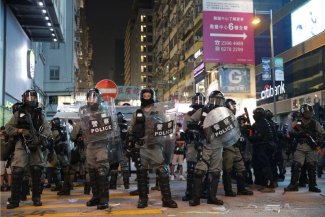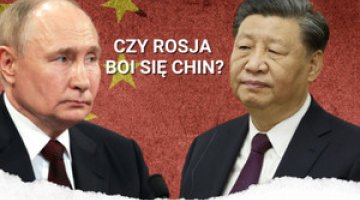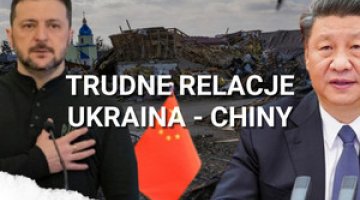Dilemma in Beijing: how to stifle protests and punish Hong Kong

The protests in the Special Administrative Region of Hong Kong have been going on since March, and were triggered by a bill allowing extradition of inhabitants of the region to the People’s Republic of China. The demonstrations are organised by a decentralised coalition of democratic organisations, and many occur locally and spontaneously. Social media also play a major part in organisation and the reaching of decisions by a vote. During the summer, a number of demonstrations each attracted almost two million people. On 12 June, when a vote was due to be held regarding the extradition bill in the local legislative council, a crowd of ten or more thousand people blocked the town’s central district and caused the council meeting to be broken off. Police used teargas and rubber bullets on a large scale to disperse the crowd. The protesters reacted to the police’s actions by making five demands: (1) that the extradition act be revoked, (2) that an independent committee be set up to investigate cases of police brutality and abuse of power, (3) that the protests stopped being described as ‘rioting’, as this affects how the action taken by protesters is classified under the law, (4) a universal amnesty for protesters, and (5) that fully democratic and universal elections be introduced to appoint both the legislature and the region’s chief executive. Since then, protests in various forms have become part of daily life. Since July, some protesters have noticeably and progressively become more radical, with cases of violence and damage to property, and a boycotting of organisations that have links with Beijing. Peaceful protests are held by various professional groups, such as government clerks, lawyers, and medical professionals, a few times a week, and violent protests occurs after dark. At the beginning of the academic year on 1 September, a school strike broke out and an airport was blockaded. The largest demonstrations, which involved violence, occurred on 1 October, the anniversary of the founding of the People’s Republic of China.
Initially, the local authorities were instructed by Beijing to ignore the demands being made by the opposition, and intensify repressive measures against the protesters. In August, China ostentatiously gathered substantial forces of the People’s Armed Militia in the region located on the border with Hong Kong, and these forces publicly carried out demonstration suppression exercises. In a country in which information about the protests was at first quashed, nationalist hysteria has been whipped up, with accusations that the US has launched a ‘colourful revolution’ in the region. Meanwhile, in the face of protracted protests, and concern around the world about the future of Hong Kong as a world financial centre, including pressure from the US Congress, the local authorities were allowed to make token concessions and launch social schemes, while the repression escalated further.
Hong Kong’s importance as part of China
- When sovereignty of Hong Kong was handed back on 1 July 1997, in addition to reversing democratic reforms introduced by the British authorities from 1984 onwards, when the Joint Declaration to return the region was signed, Beijing de facto preserved the colonial structure by which the territory was ruled. This was intended to adhere to the ‘one country, two systems’ principle. As a result, management of Hong Kong was left in the hands of local officials and tycoons controlling the region’s economy. Criminal organisations (triad) have even been allowed to operate under the guise of religious organisations, provided that they do not operate in China, and in particular do not smuggle narcotics into China. At the same time, a broad range of liberal elements of the former system remain, such as freedom of the press (limited by a campaign by pro-Beijing business to buy up independent publications and bookstores), partially free elections of certain representatives (while the authorities do often deny opposition candidates the right to register) and the rule of law (distorted by politically motivated judicial appointments). Paradoxically, despite a change in China’s international standing and for instance a broadening of global ambitions, the authorities in Beijing cannot find an effective tool to manage a region like Hong Kong, which is so economically important but different to the rest of China, without destroying its institutions. This has led to political paralysis and provoked a crisis.
- Hong Kong has played an important economic role for China disproportionate to its GDP, which formally is only 2.7% of China’s GDP (in 1997 it was 18.4%), but its autonomous status and place in the international financial system entitles it to negotiate its own trade and investment agreements, which means for example it is not affected by hikes in US customs duties. This investment freedom makes it the main channel for inflow and withdrawal of capital from China. Since 1998, one third (USD 829 bn) of bonds denominated in foreign currencies of Chinese businesses have been issued in Hong Kong. Three quarters (USD 362 bn) of foreign initial public offers of Chinese businesses also took place in Hong Kong. Hong Kong’s status also allows foreign capital the option of purchase by local intermediaries of shares in Chinese businesses on the Chinese stock markets, and the ‘Bond Connect’ scheme made it possible for foreign investors to purchase Chinese bonds for RMB 2 tn (approximately USD 280.2 bn). Last year alone, Chinese firms were able to gather, globally, USD 64.2 bn worth of capital, of which approximately USD 19.7 bn was on the domestic market, and USD 35 bn in Hong Kong. In turn, state banks on the continent invested approximately USD 1.1 tn (approximately 9% of China’s GDP) in the region up until 2018. Hong Kong also has its own currency, the Hong Kong dollar. Its special status also means that it can import dual-use products and technology, on which there has been a US and EU embargo on export to China since 1989. Despite trying for many years, Shanghai has not been able to take over this exceptional role. Loss by Hong Kong of its special status, which is a result of its inclusion in the global markets, would be catastrophic for the Chinese economy. This would severely limit Beijing’s options.
- China’s preservation of colonial structures for managing Hong Kong has meant at the same time erosion of the public consultation system that functions within those structures. These consultations have ceased being a source for information concerning the mood among and demands being made by inhabitants of Hong Kong. As a result, the regional authorities and Beijing lost the ability to recognise the looming crisis, while this created tension in Hong Kong itself. In 2001, a school reform programme was proposed, under the slogan ‘moral and civil education’, which the democratic opposition declared to be a smokescreen for a programme of communist and nationalist indoctrination and a plan to make the Mandarin dialect the language of instruction instead of Cantonese, which is predominant in Hong Kong. During the protests against these changes, the generation behind today’s demonstrations experienced a political awakening. The ‘reform’ was eventually dropped in 2011. The political situation became worse when the current Chinese leadership took power in 2012, headed by Xi Jinping. In 2013, a promise in the Basic Law (art. 45) that direct elections for the Chief Executive (currently appointed by an electoral college controlled by Beijing) and election of the entire Legislative Council in a general election (half of which is currently elected directly) would be introduced was reneged upon. This triggered a protest in 2014 (the ‘umbrella revolution’), in which demands were made for introduction of political democracy. After a few months the protest was subdued, but the underlying political and economic factors causing increasing discontent in the region were not addressed. Since then there has also been a process of gradual limitation of Hong Kong’s autonomy, and the local authorities have lost all independence in crucial decision-making for the region, focussing on assuring the central authorities that everything is under control. This gave Beijing the false impression that it could pass the controversial extradition bill without facing substantial opposition.
- Hong Kong’s special status as Asia’s financial capital does not in fact have an effect on the financial standing of most inhabitants. Although for many years it has been top in the economic freedom rankings, the economy is monopolised by tycoons. Since 1997, there has been an outflow of manufacturing jobs to China from the region, and the service industry has not been able to generate a matching number of jobs. Inequality in distribution of wealth is rapidly increasing, with a Gini coefficient of 0.539. This is coupled with immigration from the mainland (approximately one million people) and a speculative bubble on the real estate market stimulated by an inflow of capital from China, sending housing prices soaring to levels beyond the means of the greater part of the public. Over the same period, Beijing was incapable of touching the tycoon monopolies, who have business ties with China’s political and business elite.
Consequences of the protests
- As a result of what is now six months of political crisis, the region’s authorities have lost all credibility. A poll conducted by the Communication and Public Opinion Polling Centre at China’s Hong Kong University in mid-October revealed that 72% of respondents do not trust the authorities or the police. For the first time in history, the percentage of people who give a ‘0’ grade on a scale from one to ten for trust in the police exceeded 50%. It is difficult to determine the current scale of protest because the demonstrators have adopted a strategy of protesting in various places at the same time, in order to spread out and confuse the security forces. Nevertheless, it seems that the actions still have the support of most of the population. On 4 October, Chief Executive Carrie Lam announced that the extradition bill was being withdrawn, but, at the same time, the authorities reacted to a wave of protest on the anniversary of the founding of China (1 October) by making it illegal to cover faces at demonstrations, which bears all the hallmarks of provocation, and greater repression. Even if the unpopular Lam were to be dismissed from office, this will not change the fact that the local authorities – passive, incompetent, and discredited – are another obstacle preventing the crisis from being resolved. In fact, Beijing is reluctant to dismiss Lam anyway due to a fear that this would be perceived as acknowledging that mistakes have been made.
- The protests have severe international implications, and this also limits Beijing’s options. The important part played by Hong Kong as a financial centre is causing the financial markets concern about the safety of capital flow, but also about maintaining the rule of law and independence of the judiciary in the region, which is a guarantee of Hong Kong’s special status. The political situation in Taiwan is also an important aspect. On 11 January 2020, combined presidential and general elections are due to be held in Taiwan. The principle introduced in Hong Kong of ‘one country, two systems’ is the foundation for a proposal for unification put forward to Taipei by Beijing. For this reason, protests and the breaking of Hong Kong’s autonomy have already led to a strengthening of the independence camp and weakened organisations that favour closer relations with China. The situation in Hong Kong has also affected Chinese-US relations. Under pressure from Congress, despite initial silence on the part of the Trump administration on the subject of the protests, they have become an element of the trade war. On 15 October, the House of Representatives adopted the Hong Kong Human Rights and Democracy Act, providing among other things for an annual review of respect for human rights, democracy, and Hong Kong’s autonomy. This could ultimately cost it its special status in relations with the US and introduce the possibility of individual sanctions (modelled on the Magnicki act) on those responsible for subduing and repressing the democratic movement in the region.
China’s strategy
- Not only is China unwilling, it is incapable of entering into talks with opposition parties in Hong Kong. The actions of the authorities are causing the conflict to escalate, and Beijing has also become trapped in its own rhetoric about foreign intervention – as a result, a political compromise would be perceived as a concession towards ‘foreign forces’. Despite an official line being taken about the US’ ‘dirty hands’ being behind the protests in Hong Kong, the Beijing authorities realise that the causes of the protests are the difficult social-economic situation and a failure to deliver on promises to introduce political democracy. Due however to (1) the overriding importance of ideology and an inability to adopt a policy of compromise, (2) fears that demands for introduction of democracy could begin to be made in China itself, and (3) difficulty in understanding the political aspirations of the inhabitants of Hong Kong, Beijing cannot conduct political reform in the region, and decided upon the only path it understands, which is repression. This has led to the devising of a three-step plan to subdue the protests and to employ a specific kind of punishment for the region by neutralising its separate status while preserving, for international purposes, if at all possible, the ‘one country, two systems’ façade. China’s plan can be summed up in three points: (1) in the short term, Beijing’s approach will be to use force and repression, for which two scenarios are in place: (a) hybrid intervention, and, as a back-up plan (b) direct intervention; (2) in the medium term, the authorities will look for a quick solution to the region’s immediate social and economic problems; (3) the long-term goal is to destroy Hong Kong’s separate institutional status and identity.
- The first scenario – which is the preferred one and is currently being pursued, in which the protests are subdued – involves a type of ‘hybrid’ intervention using the loyal element of the Hong Kong police. There is much to indicate that the police have been promised complete immunity from prosecution. The actions of these police could be reinforced by members of the Chinese security forces wearing local uniforms as a disguise. Criminal organisations (triad), and special forces acting as civilians are also used. The aim is to intimidate protesters – and this is the reason for a series of assaults by ‘parties unknown’, and also unexplained deaths, which the police are quick to classify as suicide. Next, the authorities attempt to isolate the most radical elements from the rest of society, by way of provocation and acts of vandalism. It is difficult to judge the percentage of cases of use of violence and damage to property that are attributable to actions or provocation by the security forces, and the percentage due to radical elements of the protest movement. The media have however been able to document a series of operations carried out by the security forces in which officers infiltrated protesters. The authorities are hoping that these measures will cause social division, lead to alienation of both protesters and police, and wear down the population, thereby bringing the protest to a natural end, minimising the international repercussions, and preserving the illusion of the region’s autonomy. Further implementation of this scenario involves a risk of the situation getting out of control and protesters becoming even more radical. This will mean failure of operations to sow division among those providing social support for the protest, and the troubles possibly spilling over into China.
- The potential failure of hybrid intervention could lead Beijing to turn to direct intervention to enable a larger number of protesters to be repressed, the region’s entire community to be pacified, and rapid changes to be made to the political system, modelled on those made in China. In view of China’s past and political culture, contrary to economic calculations, this could be an attractive scenario for certain conservative elements of the party, who are always eager to quickly subdue any signs of opposition to rule by the CPC. Direct intervention could also be expected to lead to withdrawal of foreign capital and business, and loss by Hong Kong of its special status in the world’s financial and commercial system, with all of the adverse consequences that entails, above all for the Chinese economy. This can also be expected to lead the US and EU to impose economic sanctions, and bring about election victory for the opposition in Taiwan and disintegration of the pro-Beijing parties in Taiwan.
- In the medium term, the authorities’ aim will be to solve the most serious social and economic problems which Beijing sees as the cause of the protests. This is demonstrated by a speech made by Carrie Lam on 16 October 2019, in which she made the following announcements: (1) that approximately 700 ha of private land will be taken over for housing purposes, on which new flats are to be built even in the next few years; (2) that in the longer term a further 450 ha will be taken over for housing purposes; (3) that the authorities will introduce a series of measures to help first owners of low and average income to purchase properties; (4) that a fund will be set up to be used to build 10 000 new substitute flats in the next three years for persons on the waiting list for social housing. These measures are too little too late. Not only do they not address political issues, they also do not address the question of the rapidly growing social inequality. The protests, which have now been going on for a few months, must also be having some effect on the region’s economic situation. At the moment it is difficult to judge to what extent Hong Kong entering a technical recession in October 2019 is linked to the economic slowdown in China, and to what extent it is a result of the protests. Nevertheless, the deteriorating economic situation is hindering any plans Beijing has for a quick solution to the crisis by providing social benefits and schemes.
- In Beijing’s view, the true point of origin for the protest is Hong Kong’s continuing separate identity, which has to be eliminated in the long term. At the moment, China can be expected to emphasise far-reaching reform of teaching curricula in a ‘spirit of patriotism’. This will be accompanied by further inflow of migrants from the mainland and promotion of the mandarin language. If direct intervention occurs, freedom of the press will be restricted and censorship will be introduced, including censorship of the Internet. Regardless of which scenario for subduing the protest is enacted, further action against the democratic opposition can be expected, including exclusion from elections, show trials, and intimidation of family or pressure on employers to fire people involved in opposition activity, as well as operations conducted above the law, people being abducted and taken to the mainland, forced emigration, or measures directly affecting the health and life of activists.
- There is every indication that due to their limited options, the Beijing authorities will avoid direct intervention in the immediate future. On one hand they are hoping that the adopted hybrid intervention strategy will finally begin to produce the desired effects. On the other, they are concerned that direct intervention will enable the independence camp in Taiwan to solidify its power and lead Hong Kong to lose its role as a financial centre, which is crucial for the Chinese economy, and result in economic sanctions for China. For this reason, at least until the January elections in Taiwan, there will probably not be a switch from the hybrid intervention scenario to direct intervention. There might be a change in policy if: (1) the situation in Hong Kong gets out of control; (2) social unrest breaks out in China itself, inspired by the protests in Hong Kong; (3) there is a serious change to China’s disadvantage in the international context, for example in the trade war with the US, or (4) infighting begins within the Chinese leadership. If one or more of the factors described above arise, decision-makers in Beijing will probably come to the conclusion that they cannot put off direct intervention any further, and that they have to demonstrate their resolve in a definitive manner.





